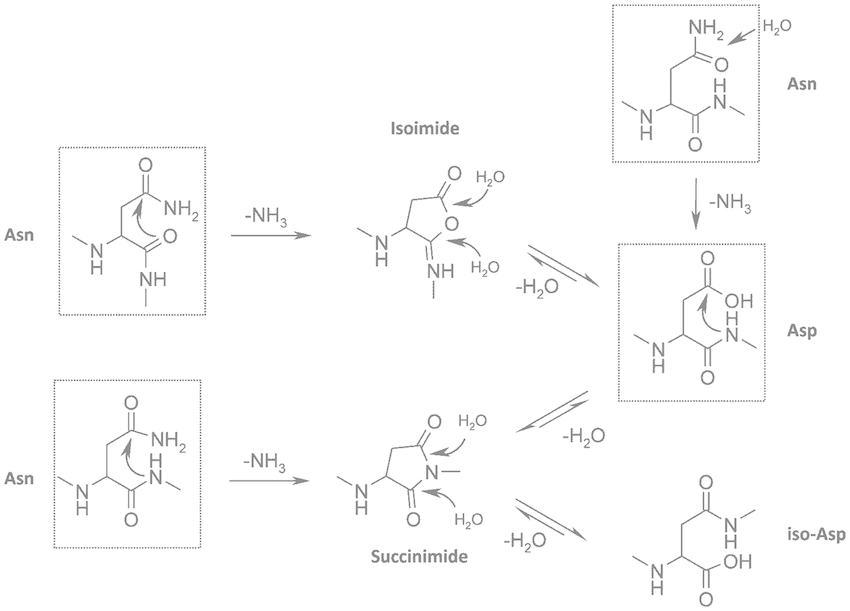The role of amino acids in the human body and other functions is indisputable. Amino acids are considered to be essential for living organisms, especially humans. You must have read much about the essential amino acids, but here we will take a look at two of the non-essential amino acids, Aspartate amino acid and its correlation with Asparagine
What Are Amino Acids?

Amino acids are the molecules that bond together to form larger protein molecules. As widely known as building blocks of proteins, they are the 20 amino acids that the human body needs for healthy functioning.
9 of them are the essential amino acids that are not obtained within your body, hence need to be consumed externally through foods like meat, poultry, fish, dairy, soy, legumes, buckwheat, quinoa, etc.; or, even through dietary supplements.
The rest 11 are the ones that are produced within your body; hence they need not be arranged from an outside source. These are the non-essential amino acids.
Amino acids play vital roles in building and maintaining muscle tissues. They are vital for synthesizing hormones and neurotransmitters, protecting cellular nerves, boosting metabolism, regulating immune activities and blood sugar, improving performance, absorbing essential nutrients, and few more.
Here we will be concentrating on the non-essential amino acids, Aspartic acid or aspartate, and Asparagine amino acid, which are readily and naturally synthesized by mammals. It is one of the 20 building-block amino acids of proteins.
What Is Asparagine?
Asparagine is an α-amino acid that is used in the synthesis of proteins. It contains an α-amino group, an α-carboxylic acid group and a side chain carboxamide, making it a polar aliphatic amino acid.
It is non-essential in humans, which means that the human body has the ability to produce them on their own.
Asparagine is encrypted by the codons AAU and AAC.
Functions of Asparagine
- It is important for the development and proper functioning of the brain
- It plays an important role in the synthesis of ammonia
- It is especially important for protein synthesis during replication of poxviruses
- Biosynthesis of glycoproteins and other proteins
- It is important in the metabolism of toxic ammonia in the body through the action of asparagine synthase which attaches ammonia to aspartic acid in an amination reaction
- It is used as a structural component in many proteins
What Is Aspartate Amino Acid?
Aspartate, as is well known, is the anion of the aspartic acid similar to glutamic acid and glutamate. Aspartic acid is an α-amino acid, which bears a net negative charge. It is the most known form of the amino acid that occurs under physiological conditions of the body.
Aspartate amino acid has some important biochemical roles to play, which we will take a quick glance at.
- It is a metabolite in the urea cycle and participates in gluconeogenesis. It plays a key role in urea cycle by contributing amino groups to the formation of urea.
- It carries reducing equivalents in the malate-aspartate shuttle, which utilizes the ready interconversion of aspartate and oxaloacetate, which is the oxidized derivative of malic acid.
- Aspartate donates one nitrogen atom in the biosynthesis of inosine, the precursor to the purine bases. In addition, aspartic acid acts as a hydrogen receptor in a chain of ATP synthase
- Dietary L-aspartic acid has been showing to act as an inhibitor of Beta-glucuronidase, which regulates enterohepatic circulation of bilirubin and bile acids.
- It is the amino acid which provides a nitrogen atom for the synthesis of inosine
- It serves as a neurotransmitter like glutamate but, its effect is not as strong as that of glutamate
- Aspartic acid, of which the symbol is either Asp or D, where the ionic form is known as aspartate, is used in the biosynthesis of proteins
What Is the Relation Between Asparagine and Aspartate?
It all started when in 1806 Asparagine was isolated from Asparagus juice. Asparagus is a perennial flowering plant species in the genus Asparagus. Its young shoots are used as a spring vegetable.
This isolated Asparagine was further hydrolysed by Auguste-Arthur Plisson and Étienne Ossian Henry. This hydrolysis experiment gave birth to the discovery of Aspartic acid in 1827.
The amide group of asparagine may be easily hydrolyzed to amino and carboxyl groups to form aspartic acid. This conversion is related to the molecular basis of aging. It is located on the surface as well as inside the proteins due to the ability of formation of hydrogen bond through amide group of molecules.
So, as we can now relate, Asparagine is a derivative of aspartic acid. Asparagine has an amide functional group in the carbon distal from the α carbon. Whereas, its acidic form, aspartic acid has a carboxyl group.
The side chain of asparagine has no electric charge, that is, it is polar.
The basic and primary difference would be that aspartic acid has The C4 carbon is in Aspartic acid while Asparagine has an amide group.
Asparagine residues can be changed to build complex carbohydrate chains and is important for that reason. It can also form into cycle within a peptide or protein to form an amide that opens to form aspartic acid.
The main function of Asparagine as an α-amino acid, is that it can be used in the biosynthesis of proteins while, Aspartic Acid because of it having an overall negative charge plays an important role in the synthesis of other amino acids.
Aspartic acid also has an important role in the citric acid synthesis and urea cycles.
Another important fact we should discuss is that aspartate is the precursor to various amino acids for different plants and organisms, apart from the four essential amino acids for humans, namely, Methionine, Threonine, Isoleucine, And Lysine.
Asparagine is derived from Aspartate itself via Trans-amination
Takeaway
We have tried to discuss two of the 20 amino acids Aspartate and Asparagine. We also discussed their functions and their relation with each other and with respect to different living organisms including humans. We also got a quick glance at the chemical structure they form into and the way they react with other chemicals.
Post You May Also Like




